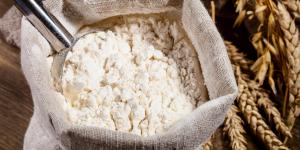What Is the Difference Between Plain and All Purpose Flour


All purpose flour is a common ingredient in thousands of recipes and is widely used by thousands of people every day throughout the globe. If you have found it as an ingredient in a recipe and are confused because you can't find it in your local supermarket, don't panic! There are many terms used for this ingredient depending on the country, so it's a common question. At OneHowTo we want to tell you exactly what is the difference between plain and all purpose flour, its different names and what it's commonly used for.
Difference between flour types
Though you may think that flour is simply flour, there are in fact several types that are used for different purposes. The most commonly mistaken are all purpose flour, bread flour and cake flour, as they are all made from wheat.
The basic difference is the amount of protein and gluten they contain, so cake flour is more finely grounded and has less gluten concentration, whilst bread flour needs to have more gluten strength. All purpose flour is normally the most commonly used because, as the name suggests, it can be used for most recipes.
Though the fact is that this flour is "all-purpose", you need to check the label for bleached or unbleached, as the first is better for pies and pancakes whilst unbleached flour is better for more consistent crusts such as puff pastry or strudel.

What is all purpose flour known as
As we have said, all purpose flour is the name commonly used in the United States, and has other names in different countries. For example, in the United Kingdom and Australia, all purpose flour is simply known as Plain Flour. In India, all-purpose flour is commonly known in Hindi as Maida.
So what exactly is the difference between plain and all purpose flour?
All-purpose flour is a mixture of both hard and soft wheat and has from eight to eleven per cent of gluten and can be used for many popular recipes and is also known in many countries as plain flour, so they are really synonyms.
However, it should not be confused with self-raising flour. All purpose flour doesn't raise in the oven, as it's the baking soda added to self-raising flour that gives it this property.
Now you know more about all-purpose flour, how about trying it out on one of the following OneHowTo recipes?

If you want to read similar articles to What Is the Difference Between Plain and All Purpose Flour, we recommend you visit our Food & drink category.
Tips
- Leave a comment and let us know about your favorite recipes with all-purpose flour!







